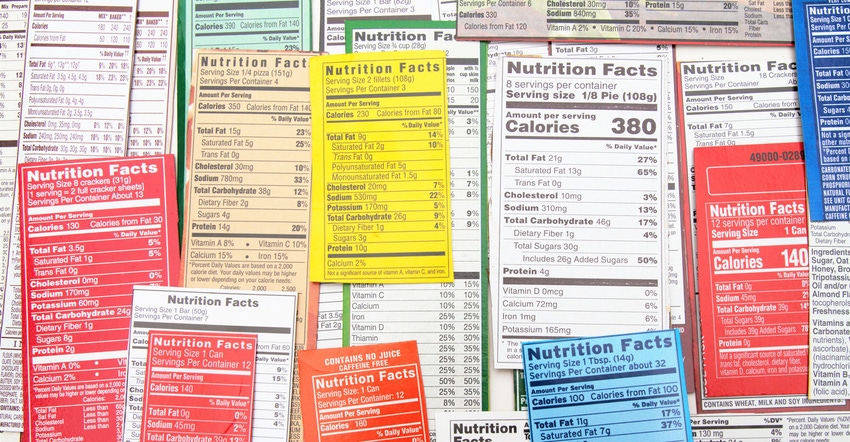April 9, 2021

Walking through the grocery store, you’re likely to see more labels than in years past on your food and grocery products. Aside from the nutrition and brand labels, you might see “all natural,” “organic,” “free-range,” “grass-fed” and “non-GMO.” I’d preface this blog by saying I support and encourage all types of agriculture, organic and conventional, GMO-grown or grass-fed cattle.
Working in agriculture, I always have had the privilege to understand these mostly fear-centered marketing tactics and happily eat my GMO conventionally grown foods. However, for consumers who are just worried about feeding their kids and families the best and healthiest options, how could they not be influenced? But does fear sell?
What are these food labels?
The labeling process is a confusing one for many consumers, as they might be surprised to find out that some of these terms on their packages don’t mean anything but a higher price point.
Foods and products labeled “USDA Organic” are regulated through a process completed by the Food and Drug Administration to ensure these foods are up to the standard set. But what about labels such as “all-natural”? That label can be used by any company and organization with very little regulatory practices behind it. The FDA has never formally defined “natural” labeling and has not established any requirements for regulation with this term on labels.
One that surprised me when I first learned about it, is what is considered “free range” in poultry production. After raising chickens, I couldn’t imagine that egg and poultry farmers could raise free-range chickens and make any sort of profit to support their families. The USDA free-range definition simply means that chickens can be raised in a building, room or area with continuous access to food, water and the outdoors.
I don’t think there is anything wrong or unsafe for chickens to be raised conventionally, and will always be on the side of the producer when it comes to animal welfare and how they raise their animals. Essentially though, this label just means that consumers expect eggs laid by a chicken frolicking around the pasture eating bugs and sun-bathing. In reality, when you look at the regulations behind it, those eggs aren’t any different from the store-brand carton without an upcharge from extra labeling.
Marketing tactics
Prompted by seeing an Environmental Working Group’s poster on the “Dirty Dozen” hanging in a doctor’s office, I did what (maybe some) millennials do and polled my Instagram following for their opinions on food labeling and marketing.
My heavily agriculture industry friends were quick to mention that they try to avoid unnecessary fear-marketing and labeling, such as the Non-GMO Project label on something that isn’t even grown as a GMO crop. Many of their responses ranged from talking about the pure marketing ploy that is happening in our food system, to that they only choose to purchase organic or non-GMO foods for their families.
This prompted further discussions with one friend, who was shocked to find out that organic farming still used pesticides. This friend grew up in rural North Dakota and was involved in agriculture in college and through friends that farm.
For me, it’s the lack of clear-cut labeling that can deceive people trying to be healthy into spending $5 more than needed on strawberries. Many people know the standards and regulations behind these labels, and still choose those foods.
However, being able to purchase organic, all-natural, free-range foods are a privilege that many families don’t get. According to the USDA, 5.3 million households experienced food insecurity in 2020. Those families struggled to have enough food to sustain themselves, and you could guess they were not spending more money for less food by choosing the organic or all-natural options.
Safety for all
The feedback from my agriculture industry friends was that these food labels are nothing but a marketing ploy to scare people about agriculture and how safe their food really is.
The great thing about the U.S. is that we have one of the safest food supplies in the world. No matter what people choose to spend their money on at the store, they can feel secure in the fact that all of their food is safe and healthy for their families.
No one should be scared of what’s in their food, or worried about their families health for eating something without an organic label. As for me, I’ll continue to enjoy my conventionally grown, grain-fed beef and my non-organic strawberries.
You May Also Like




